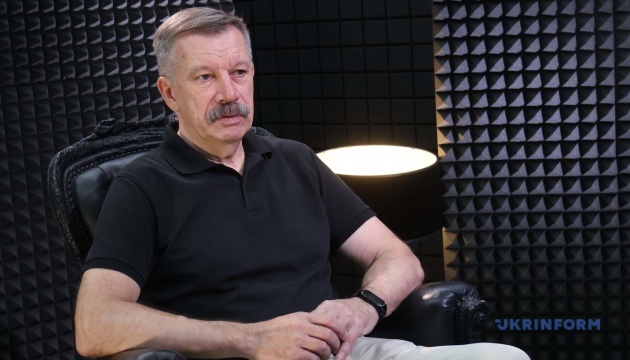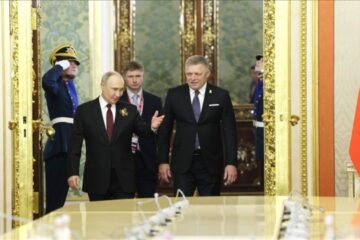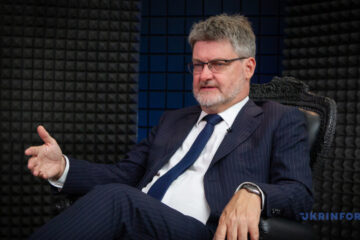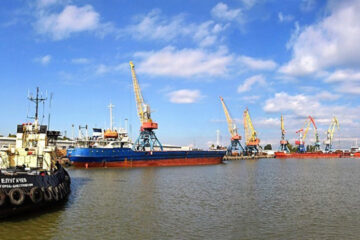Starting with the Trump-Putin summit in Anchorage and onward this week, many developments have taken place. So we have to choose the main ones so as not to get lost in the details. However, if we look deeper, there are not so many details. There is a flood of news, but there is little substance behind the news.
When it comes to the bottom line following the highest-level meetings and what to work on next, it is worth highlighting three points. The first is that the further negotiations will no longer be about a ceasefire, but about a peace agreement – this is the vision Trump brought along from Alaska. The second, which Zelensky and European leaders focused on in Washington, is security guarantees for Ukraine. The third and final is what awaits us ahead if President Zelensky and Russian leader Vladimir Putin meet by the end of August. So, let’s try and talk over what is the most relevant and important now – security guarantees for Ukraine. It is this issue that the leaders devoted a lot of their attention while in Washington, and now intensive work is underway to formulate these guarantees.
For this conversation, Ukrinform sat down with Major General (ret.) Volodymyr Havrylov, former Defense Attaché of Ukraine in the United States, who is well informed about Washington, diplomacy, and the situation regarding security guarantees.
[embedded content]
– President Zelensky has formulated the general vision of security guarantees thus: “Security guarantees based on the results of our joint work should be very practical and provide security on land, in the sky and at sea, and should also be developed with the participation of Europe.” Are our partners really willing, and most importantly, can they provide us with reliable security guarantees?
– First, we all understand and have learned over the years of the war with Russia that the best security guarantor for Ukraine is mighty Armed Forces. This is the indispensable element without which all other guarantees make no sense. No one will defend Ukraine’s territory instead of Ukraine. Partners will not send their people to locations where the risk of loss of life is high. The talk is only about the need to back up with material resources – in which we are limited — our motivation to defend the country, our experience in defending the country.
But we have to be sure that we have partners, guarantors of our security, who will ensure the supply of system components and weapons to us. And each of the partners chooses for itself its own niche in this system. The United Kingdom, for example, is ready and willing to work on security at sea, leveraging technology developments, its ships, other naval components, where it has vast experience. Other countries, such as France and others who have aviation, could perhaps commit their capabilities, particularly air defenses to protect Ukraine’s airspace. And still others, more advanced technologically, could provide their expertise and resources, such as electronic warfare or communication, or space-based communications, or space reconnaissance. At the same time, the Americans are still looking at where they can assist, but bearing in mind the position of president Trump, who said that it is Europe who has to provide these guarantees in the first place, and America will get behind.
That’s roughly how it looks like. So, all these negotiations are supposed to end up in finding out who has what to support us in whatever circumstances the situation may be in. And most importantly, everyone must work to ensure that the Ukrainian army is able to withstand any assault in the future.
– This is about the future. But talking about the present day and about the basis for building such guarantees, it’s the Armed Forces of Ukraine who have to provide the basis for these guarantees. It was therefore extremely important that the Europeans, after Trump’s first contacts with Putin, stated in clear and firm terms that there can be no question of reducing or limiting the Armed Forces of Ukraine. This is a response to the terms Moscow had set out for a peaceful settlement.
President Zelensky, after the Washington summit, spoke out in the same vein, “A strong army should be the main component of Ukraine’s security. It is already strong. But there is a challenge here. After the war ends, we must not lose the army, we must not have it reduced many times due to lack of funding, and we will not have the money for this in our budget. We therefore need additional funding.”
In peacetime, the Armed Forces will have to be downsized, but not in the way Moscow sees it. At the same time, even with reduced and downsized military, external funding will be needed anyway. Is there any other way out?
– Firstly, the structure of the Armed Forces of Ukraine after the war will differ from the one that existed when this war began. The war has shown that many things are already provided by technological systems and solutions, robotic platforms, and others, where the human role and mission are decreasing. In a contemporary war, the number of people on the battlefield is not as a decisive factor as it was previously. Accordingly, it’s inevitable that the Armed Forces will be downsized to a certain core force that will be deployed in the event of a threat. These are, firstly, permanently operating units that undergo constant training, and secondly, the Reserve, which is deployed the next day if that is deemed necessary. And the third component is the people with combat experience, those who will need to be organized in advance based on their assigned role and mission.
But in peacetime, the professional core and Reserve must be funded to full requirement. Service in this force must be the highest paid in the country, complemented with all social security guarantees, and be appealing, at least. And secondly, there should be a very strict system of selecting people. There should be a competition for serving in the modern Ukrainian military ranks. We must do everything we can to ensure that there are more willing candidates than vacant positions. Then we can select people who will use modern high-tech systems in modern warfare.
Indeed, we are not going to have enough money even to fund for personnel costs associated with these core forces and reserve, because these are very expensive to sustain. Another issue to be addressed is the share of the national budget that should be allocated to the Armed Forces. In Europe, they are now struggling for 3–5% of GDP. We should already have 5% GDP during 10–20 years to come, as is the case in Israel, so that we know the minimum level of funding we can afford and then see how much money is lacking.
And this financial component should be clearly factored in the security guarantees currently being negotiated with Europe and others. It’s another issue how it will be supported by Europe, but in any case, it should be a very transparent process so that people in Europe understand that the money they spend on Ukraine goes to the defense of all of Europe. Basically, it is not a problem for Europe to ensure the modern Armed Forces of Ukraine — who will defend not just Ukraine, but the entire eastern flank of Europe — are funded as necessary.
– So, the No 1 guarantee is the Armed Forces of Ukraine and the understanding that, even in a reduced post-war size, the Armed Forces of Ukraine will need external funding, because we will not be able to find sufficient funds to sustain defense spending as the country will be recovering from the war. Thus, the provision of funding for the Armed Forces of Ukraine should be made a part to the security guarantees package.
Secondly, there should be a part about armaments, since the Armed Forces must be provided with everything they require. This was provided for by the agreements on defense cooperation Ukraine has signed with NATO member states and other partners. Despite all the shortcomings and criticism of these agreements, they include support for the Armed Forces and building up the capabilities and weapons for the Armed Forces of Ukraine.
President Zelensky has named the figure of USD 90 billion – this is the worth of the weapons NATO can purchase from the United States for Ukraine. Will that suffice? After all, to date, only several European NATO member states have confirmed such purchases worth approximately USD $1.5 billion out of the USD 90 billion that will theoretically be available. It is also worth mentioning that the Ukraine Support Act, passed by the US Congress in 2024, provided for USD 60 billion worth of support per year. True, this included not only weapons but also economic support, but 50 billion of this amount was intended for military aid.
– So, is this USD 90 billion much or not? Will it suffice?
– First, we must always consider whether there are enough weapons available for this amount at all. And currently there is a problem with this, because stockpiles in many European countries and the USA are already depleted after the weapons had been sent to support Ukraine. And today the second wave of supplies is actually coming from factories. That is, this is new production that is not going as fast as everyone would like. But production will be increased, scaled up. And therefore, the provision of the money will be tied to the ability to produce.
Secondly, there is phenomenon like that: if you are given as much money as you want, you spend it as you want, you are not cold sweating over how to survive until tomorrow. And what does this mean? You spend it on the things you know, are used to, and your brain is not focused very much on innovations or searching for other cost-effective solutions for waging a modern war. And this harbors a great danger, since modern war is a technological one, where lots of robotic systems are deployed. It became like this precisely because of the huge shortage of money and standard classic weapons. It forced everyone to look for other creative solutions and led to the widespread use of low-end affordable and fast systems such as drones, which are produced very quickly and updated and upgraded every 3-4 months. This is far less expensive than operating classic armored divisions and brigades the military has gotten used to.
Therefore, in parallel with talking about money, we have to talk about not losing the energy of innovation in modern warfare. It is better to handle a money shortage, but do so with the full understanding that you have to execute the tasks at hand, that the challenges have not disappeared anywhere, because the adversary too is developing its capabilities. Then, even with limited resources, there exist many solutions that are cheaper, simpler and faster, and these must be implemented.
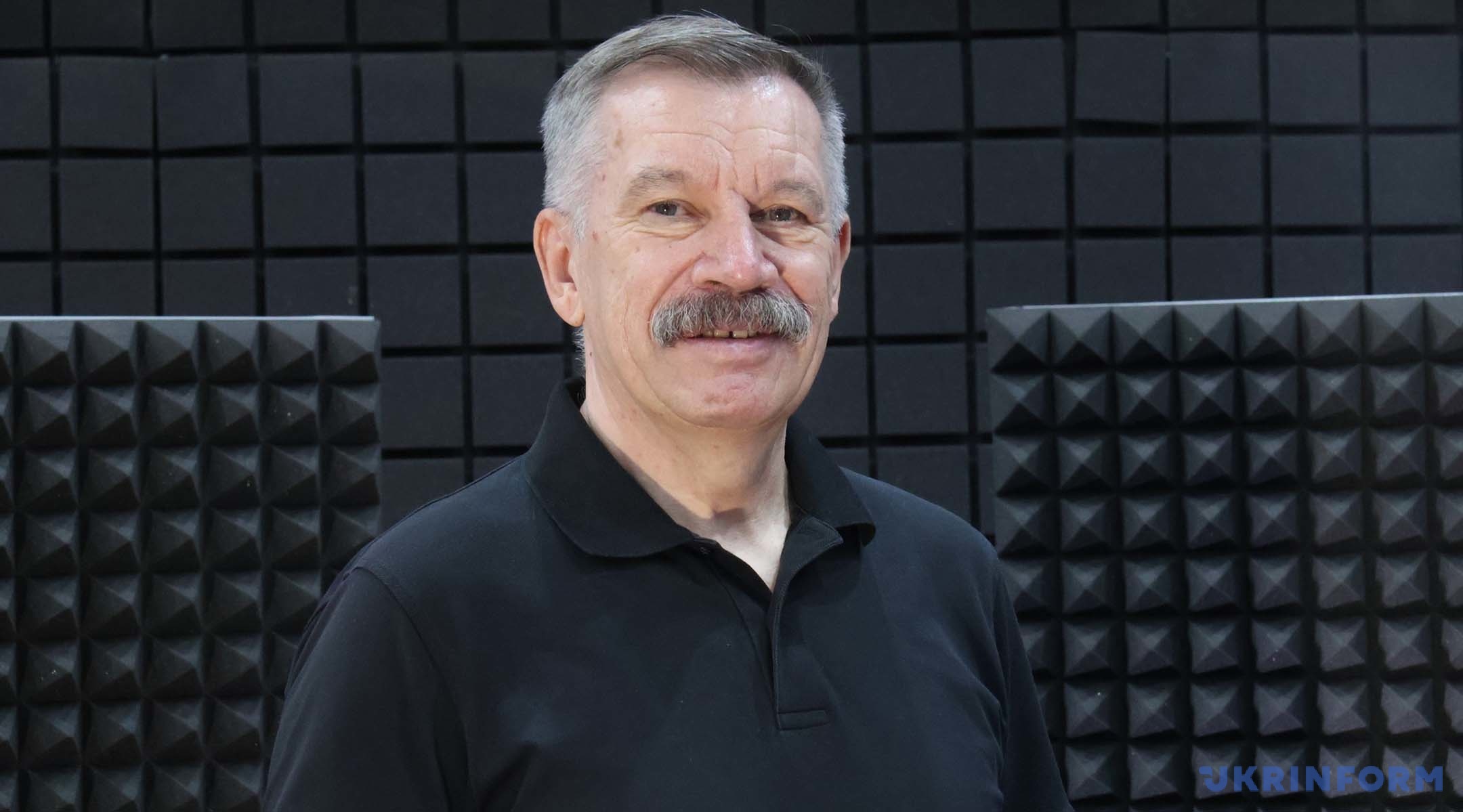
– Let’s move on to the part of the guarantees that can be called military-political. It has already been said several times that these security guarantees should be similar to the collective defense clause of NATO’s Article 5. This was suggested by Italian Prime Minister Giorgia Meloni even before the meeting in Washington. And she repeated it with pleasure at the White House summit. What Meloni meant by this, how everything will continue is still difficult to predict, but work to this end is ongoing. How could it end up?
– I think that in Europe, they themselves are not yet fully aware of how to build such a system of political guarantees. NATO’s Article 5 has only been invoked once, following the terrorist attacks on the USA on September 11, 2001. It was never invoked again, and therefore one can only theoretically speak about its practical effectiveness. Where it comes to providing security guarantees for Ukraine, which is not a member of the NATO bloc, then Article 5 can only be understood as meaning that, if something bad happens, the response will come not from one European country, but from ten or more member countries of the Coalition of the Willing. This is not really similar to Article 5, an there is no need to cite it at all. Obviously enough, now there will be discussions at the level of expert groups. We need, as President Zelensky said, to find a practical option so that things don’t go the way they did when Ukraine was provided with security guarantees under the Budapest Memorandum, when there is a document, but there are no practical actions stemming from it. We need to keep in mind the worst-case scenario. And the worst-case scenario is like that – a war has broken out, we have our Armed Forces and guarantees of weapons supplies. The weapons will be provided, indeed, because it is easier for them to give weapons and money than to rush to war ourselves – this is how Europe feels about it. And that is why we constantly return to the option where the Armed Forces should be the main security guarantor, and everything else is secondary.
– Strictly speaking, we need to invent some palliatives or draw on what already exists, the essence of Article 5 is to respond immediately. And this article requires each member to assist the attacked party by taking actions they deem necessary, including armed force. This is what makes the essence of collective defense. The Coalition of the Willing as well is talking about this. What can Article 5 mean for Ukraine without NATO’s presence in Ukraine and without Ukraine’s membership in NATO? These are strong Armed Forces of Ukraine, what else?
– The experience of this war has shown, firstly, that you have to rely on yourself, which is normal from the point of view of protecting your own territory. And secondly, you should always have partners who will help materially or in some other way. And you have to bear in mind that partners will never be willing to put their people at risk on your territory, especially as we are not members of NATO. But they will be willing to help with something else. And we need to build relations with them in such a way that we clearly understand who can help in what way in this situation, but without deploying their troops, because that will not help. The military from Belgium or the Netherlands will not fight better on our territory than we do. But, for example, some technical things that they have and can transfer to us, or if we are integrated into the NATO training system, etc. – this is important for us. And an essential element in this is that we, not yet being in NATO, already have certain formats of cooperation with the Alliance regarding the line of defense, military training and standards. It is important for us that, in peacetime, we are tightly integrated into their planning system, into the decision-making system, and into the financing system even for individual projects, so that our people feel like fish in water in NATO structures.
Here is where we have to take a huge step forward, because this is what we are lacking now, we simply do not comprehend the culture of many processes taking place within NATO. At the same time, many processes in NATO do not meet the challenges of modern warfare, they are so bureaucratized, so sluggish that a question arises as to how quickly they will be able to respond if something bad happens. Both sides must learn from each other the lessons of this war, we must adopt the best planning practices that NATO has, and they must adopt the best combat practices from us, that is, they have to learn this tactical level and operational level, which they do not have and are not going to have until the next war occurs.
In the final analysis, in this alignment, NATO membership at this stage probably cannot even be a priority for us. We talk a lot about NATO membership in a similar vein to Central and Eastern European countries in the 1990s, when they rushed to under NATO’s umbrella. They rushed to under NATO’s umbrella, rushed for protection under Article 5. Ukraine is currently not in a position to run under this umbrella, because no one will protect us there, we must protect ourselves by ourselves. But NATO as well must understand that Ukraine can be an excellent partner for the next 5-10 years, particularly because we have been able to keep our flexibility, because if and when we join NATO, we are going to lose this flexibility regarding creativity, transformation, management. Not being members of NATO so far is advantageous to us in terms of the very broad room for maneuver, tactics, agility, methods of war waging, procedures.
– For example, to invade the Kursk region…
– Yes, to invade the Kursk region. NATO would never have gone for that, they would have planned differently. NATO would have fought as they did before, they would have simply been looking for more resources, equipment. We are forced to maneuver because we are not members of NATO. Therefore, we have to approach the issue of NATO membership philosophically. Here it is better for us to get closer to each other, from the point of view of reaching a common understanding of many things.
– So, that means an approximation of the capabilities, expertise and experience, and the achievements that we and NATO have. The structure that NATO created to coordinate interaction with Ukraine, the International Donor Coordination in Wiesbaden, Germany, and the fact that discussions are ongoing around Article 5, and the capabilities are being reviewed within the Coalition of the Willing, this all is supposed to be consolidated and end up in capabilities of each of our partners be inventoried and assessed. And then, through the headquarters in Wiesbaden, they will be transferred to Ukraine. Because, in absence of coordination, no result is going to be anything worthwhile.
– Yes, Wiesbaden is the platform where these aspects are worked out. And, for example, Great Britain’s willingness to address Ukraine’s maritime security was expressed not in bilateral contacts, but precisely on this platform where each country talks about what they could do. And much of this coincides with what was discussed during the setting up of a single NATO operational capability even before the start of the war in Ukraine. That is, they have long said that it is not necessary for each member country to have a standardized military, but to transfer for joint use what it does best.
– Regarding security guarantees, we see an intention to do everything as fast as possible. President Zelenskyy spoke about 7-10 days, during which not only proposals will be formulated, but also the architecture of guarantees. The Coalition of the Willing has been working on this for several months, from the very beginning of its creation, when Macron suggested deploying troops to Ukraine after the fighting cease. A lot of time has passed, and we are talking about the fact that intense, almost round-the-clock work is underway again to extract and bring these capabilities together. And what has been done so far?
– In the past, everyone understood that this war is our war, and they are helping us. The potential deployment of foreign troops to our territory was discussed behind the scenes, but everyone actually understood that this was a political decision, a sensitive topic for NATO member countries. That’s why they were transferring equipment to us, provided training for our military, especially its mobilized component, and specialists helped us gain experience with some of their supplied systems, but on the territory of Europe.
Macron raised the issue of their military being physically present on our territory, and this raised a wave of questions as to how it will be, who will dare sending French soldiers to die? Then they slowly decided that these should be technical specialists, those who will help us catch up foreign supplied equipment.
Besides, we are not talking about how Moscow sees it. And they do not see foreign military personnel being present on our territory at all. Moscow, judging by its latest statements, claims that they were misunderstood at Anchorage regarding Putin’s willingness to consider options for security guarantees. And Lavrov said that they meant the standard guarantees based on the “Istanbul agreements”, which is a completely different story. That is, there is still no consensus reached on what the security guarantees should be like. Either Trump misunderstood Putin, or Putin presented everything so cunningly, employed his signature rhetoric, that he put Trump in such an awkward situation. Because in this context, we should also bear in mind the potentiality of our president meeting with Putin, because, judging by the Kremlin’s latest rhetoric, this option is not on the table. They only committed to increase their representation level at the negotiations in Istanbul. That is to say, we are in a situation where both sides, Russia and America, have not clearly defined what the security guarantees are about in general. I think this is nothing else but Putin and the Kremlin’s maneuvers to stall for time with the intention and hope of resolving the situation on the battlefield. They well realize that this will not happen, but they are dragging on by inertia, because they have no other options left.
For Putin, it is still a problem to leave this conflict as it is, to freeze it. For him, this is a deadly option, because then he does not see the objectives set for his special military operation being achieved. And failure to achieve these objectives actually means a crisis for their regime.
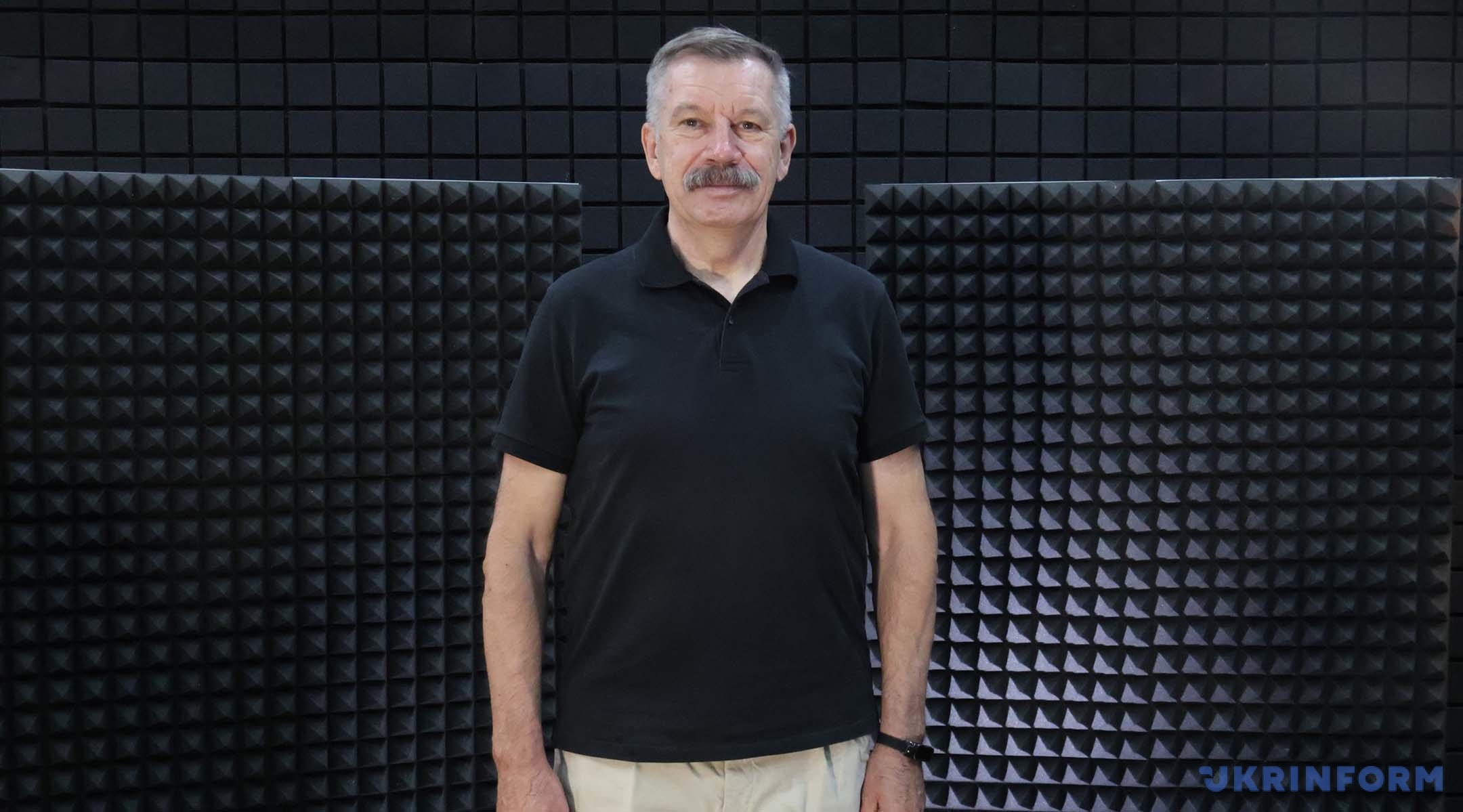
– The point is that Russia is again availing of every opportunity to drag out the process. Putin is moving away from the Anchorage agreements, if there were any. At Anchorage, Trump agreed that the talk should be about a peace agreement, and not a ceasefire, and he was confident that Russia is susceptible to the idea of providing security guarantees to Ukraine. But the interpretations provided by Lavrov are suggesting that Russia actually rejects this option.
At the same time, Trump has set a high pace, he has not gone on vacation, and he demonstratively charged Rubio to coordinate the group on guarantees, is insisting on a bilateral meeting between Zelensky and Putin to take place by the end of August, to which the Russian president allegedly agreed, although signals from Moscow are indicative of something completely different. That is, during this time (it will hopefully be very short) Trump is testing what happened in Anchorage. He is doing everything he can to ensure a guarantees package is compiled and Zelensky and Putin eventually meet to negotiate peace.
So, where and with what are we going?
– We are dealing with the phenomenon of Trump, who constantly interprets many events in his own way, and all sides are trying to use his volatile approach to international affairs. Putin’s visit to Anchorage is an element of influence on Trump: someone first ran up to him, told him something, and he, without consulting his aides, takes it as it is and begins to react. For him, now is the period of determining the realities, where he sees that what happened at Anchorage actually has completely different meanings.
This is a question of the level of his trust in Putin as a negotiating party. And it is very important for us that Trump should understand as soon as possible that it is impossible to negotiate with this man with a criminal way of thinking, even using business-like methods. And the fact that he works very quickly is a plus for Trump, because he will get to this point faster. He is trying to implement at least those agreements that he believes had been reached. But once he understands that there were no agreements actually reached, but only interpretations thereof, he will see what is possible and what is not. And it is very important that European leaders are involved in this process. Thank God, the Trump administration finally understands that nothing can be achieved in this settlement without Europe and Ukraine involved. And Europe knows more about the details of this situation, and it is taking a very wise, reasonable position – to slowly bring the American side to the reality.
– This is the main conclusion reached as of now: Europe has demonstrated unity. The collective visit to Washington showed that Europe understands its security interests and Ukraine’s role in safeguarding these security interests. European leaders see their mission in communicating this understanding to the President of the United States of America.
One more important question: what has changed between mid-May, when Zelensky was already in Ankara, waiting for Putin and Trump to fly to Istanbul, and August, when Trump talked to Putin, and now Zelensky too is supposed to talk to Putin, and then the three of them?
– In fact, Putin and his regime were hopeful that they would be able to achieve strategic successes on the Ukrainian front this summer, including a breakthrough and defeat of our force groupings, reaching some new borderlines, already in the depths of Dnipropetrovsk or some other regions, even Poltava, and putting everyone before the fact. Then there would have been be a completely different situation, and the conversation would have been completely different. They thus devoted all their time to misleading everyone and everything on the American side about their willingness for some communication, negotiations, they were dragging out the time waiting for good news from the front. They never waited for good news from the frontlines, a huge resource was spent, tens of thousands of Russian soldiers were killed, as usual, their infrastructure is also suffering, and the economy is declining and faces mounting threats.
So, in August, they found themselves in a situation where no strategic successes were achieved on the battlefield. There is also constant pressure being exerted, in particular from America. And the fact that Putin flew to Anchorage (and in fact, it was he who initiated this meeting) means that they are starting to look for a way out of this conflict, but on victorious terms for Moscow.
They will drag on for some time, hoping for some favorable results from the frontlines. But things will get worse for them there, because the Russian army is becoming exhausted, there are no reserves left. But they cannot agree to the terms which, let’s say thus, are going to create problems within Russia itself, they need to present a victory to the Russian population, where the objectives of the [special military] operation have been accomplished.
But none of the objectives have been achieved. So for them, going for a “freeze”, for some security guarantees amounts to admitting that the “special military operation” has failed. And they will have to explain where one million people have disappeared and why, what to do with the economy, which is completely militarized and unable to sustain the whole society. This is now being “cooked” in Moscow, seasoned with expectation that the Americans will be able to induce the Ukrainian side into agreeing to a scenario that can be sold as victorious to its population.
– So we can say that Putin employed a KGB-styled trick: he fooled Trump, flew to Anchorage and bargained out (or deceived Trump into) a delay in sanctions, at least until the end of August, when Zelenskyy is supposed to meet Putin – another moment of truth.
Meanwhile we are hearing new revelations from Trump. He said that he wants to try and get to heaven. And at a time when Trump seeks to get to heaven thanks to his efforts, when he can save seven thousand people a week from being killed, Putin targets an American-owned production line operated by Flex company in Mukachevo with several missiles in an overnight attack. This response from Moscow is more than explicit. That is, it seems that sins are not allowed in heaven yet.
– Indeed, sins are not allowed in heaven. Putin himself, by his actions, is actually driving everyone – Europe, America – to decisions that will eventually end up in the collapse of his regime. Sometimes you just can’t understand the logic behind why this is being done, but inside it is hidden such an immense desire to destroy Ukraine as a phenomenon which he simply cannot overcome within himself. It twists him internally, and he psychologically returns to the option where something else is being done. But nothing can be done – they have missed the point where they could have done something with us. Now everyone stands with us, half the world stands with us. That being so, there should be an expectation of interesting developments occurring this fall, when an understanding of realities will arrive, in Moscow among others.
– Most likely, that’s what it’s coming down to. But this does not diminish the tragedy and pain for Ukraine, for our people, neither does this diminish the role and importance of the Armed Forces of Ukraine. It is highly probable (and already obvious even now) that Russia will derail all the agreements that have been (or could have been) reached, along with the security guarantees that the Coalition of the Willing and the United States of America are working on.
How do you assess the chances of a Zelensky-Putin meeting being held in the near future?
– I assess such chances as very low, because for this to happen Putin has to overcome his own ego, his inner complex. For him, to sit down at the negotiating table as equal with the President of Ukraine would amount to its own kind of a huge political defeat. No matter what Trump says, that such a meeting, especially in a one-on-one format, can take place in the near future, it is highly unlikely.
– So, events are developing, and we have to do our part: regardless of all other agreements, signals, we need to strengthen the Armed Forces, increase pressure on Russia, make sure that our partners introduce new sanctions, provide weapons, and continue their support for Ukraine for as long as it takes.
Igor Dolgov led this conversation
Photo: Pavlo Bagmut
Watch the interview in full on the Ukrinform YouTube channel

